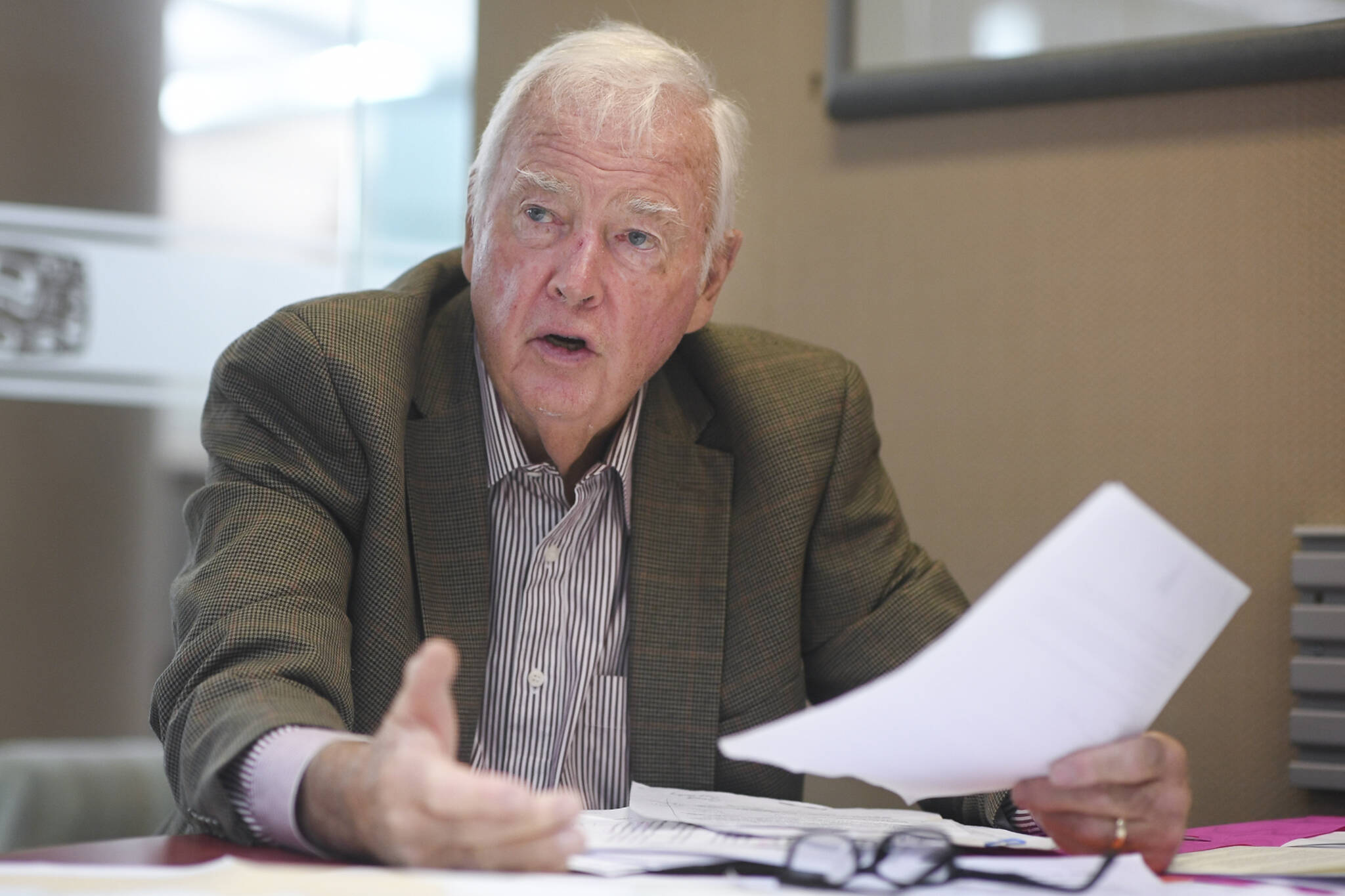By Frank H. Murkowski
Former, and current Secretary of the United States Department of Agriculture Thomas Vilsack, who was instrumental in reimposing the 2001 Roadless Rule on the Tongass in 2011 and is planning to re-reimpose it again before Nov. 1, has announced “a new Southeast Alaska Sustainability Strategy “to help support a diverse economy, enhance community resilience, and conserve natural resources.”
This is to be “a collaborative process to invest approximately $25 million in financial and technical resources in sustainable opportunities for economic growth and community well-being and identify priorities for future investments.”
While making a one-time reparations payment is consistent with action taken by the Clinton Administration when it terminated the long-term timber sales, thereby eliminating 4,200 jobs in Southeast Alaska, payments to various groups engaged in “forest restoration, recreation and resilience, including for climate, wildlife habitat and watershed improvement” does not address or correspond to the harms that his policy of eliminating roaded transportation and economic development on the Tongass will cause. The intended recipient groups either support reimposition of the Roadless Rule or are not affected by it.
Because reimposition of the 2001 Roadless Rule will hinder roaded transportation on land in the Tongass (an area the size of West Virginia), the entire $25 million should be provided to Alaska Marine Highway System to improve ferry transportation service for ALL Southeast Alaskans (not just for non-transportation purposes to Vilsack-chosen groups). Reestablishment of ferry service to Prince Rupert would greatly benefit all Southeast Alaskans and should be one of the priorities funded.
Twenty-five million dollars could be some of the bridge money needed to help sustain ferry service until construction of a long-term fix like the ferry – road network approved by the 2004 Southeast Transportation Plan and implemented by the 2005 SAFTEYLU Bill. (The2005 SAFTEYLU Bill was part of an exchange by which the State gave access to certain tidelands to the Forest Service for which the State received the upland easements to enable road construction.)
The Southeast Transportation Plan, which was approved during my Administration, remains in effect today. It called for shuttle ferries between islands with roads connecting terminals on each end of an island. The 2005 SAFTEYLU Bill, passed when Congressman Don Young was Chair of the House Transportation Committee, granted easements to the State of Alaska that enabled upland road construction between terminals. A major State victory in federal court in 2019 eliminated National Environmental Policy Act roadblocks that interfered with the Alaska Department of Transportation’s ability to properly site roads between terminals.
Sen. Lisa Murkowski told the Southeast Conference in Haines in September that she will be seeking use of the Bipartisan Infrastructure Bill funds for the AMHS, including for electric ferries. It is self-evident that the 2004 Southeast Transportation Plan would be ideal for electric shuttle ferries.
Every Forest Plan prepared by the Forest Service, even during Secretary Vilsack’s occupancy, declared that such things as “forest restoration, recreation and resilience, including for climate, wildlife habitat and watershed improvement” were protected. Although 1930s actress Mae West once proclaimed that “too much of a good thing is wonderful,” Secretary Vilsack’s July press release provides no evidence that more money for more protection for already adequately protected resources is anything other than a “feel-good public relations” exercise.
On the other hand, Southeast Alaskans see or hear almost every day in the media that there is inadequate funding for ferry service and hear about the adverse effects on everyone who lives in Southeast as a result. Elders are unable to get to hospitals for medical care due to lack of timely ferry service. High school kids are unable to travel to regional sporting events as they used to be able to do because of insufficient ferry service. Fish processors are unable to ship their product by ferry because of irregular service. What service there is interrupted by the repairs needed for the aging fleet.
If the secretary has any doubt about this he should poll Southeast Alaskans to see whether they would rather have the $ 25 million spent on “forest restoration, recreation and resilience, including for climate, wildlife habitat and watershed improvement” or enhanced ferry service.
• Frank Murkowski is a former U.S. senator and eighth governor of the state of Alaska. Columns, My Turns and Letters to the Editor represent the view of the author, not the view of the Juneau Empire. Have something to say? Here’s how to submit a My Turn or letter.

